San Cristóbal de La Laguna, commonly referred to as La Laguna, is a city and municipality in the northern part of Tenerife, one of the Canary Islands, Spain. It holds the distinction of being the former capital of the Canary Islands and is renowned for its cultural significance and historical heritage. Here are some key insights into La Laguna:
1. Historical Significance: La Laguna boasts a rich historical legacy and served as the capital of the Canary Islands before the role was transferred to Santa Cruz de Tenerife. Its historical center, characterized by well-preserved architecture and landmarks, was designated a World Heritage Site by UNESCO in 1999.
2. Population and Location: La Laguna is the third-most populous city in the Canary Islands and the second-most populous on the island of Tenerife. It is strategically positioned alongside Santa Cruz de Tenerife, forming a contiguous urban center.
3. Economy: La Laguna’s economy is primarily business-oriented, focusing on commerce and trade. However, agriculture remains a dominant sector, particularly in the northeastern part of the city. Meanwhile, the urban area is concentrated in the central and southern regions.
4. Cultural Capital: Often regarded as the cultural capital of the Canary Islands, La Laguna is steeped in cultural traditions and heritage. The city is home to significant cultural sites and institutions, including the house of the specter of Catalina Lercaro, the incorrupt body of Sor María de Jesús, and the revered Christ of La Laguna (Cristo de La Laguna).
5. Cathedral of La Laguna: The city proudly hosts the Cathedral of La Laguna, the Catholic cathedral of Tenerife, and its diocese (Diocese of Tenerife). This impressive religious tower is integral to the city’s architectural and spiritual landscape.
6. Historical Figures: La Laguna has produced several historical figures of note. Among them are Amaro Pargo, a famous pirate from the Golden Age of Piracy, and José de Anchieta, a Catholic saint and missionary who played a pivotal role in the foundation of the Brazilian cities of São Paulo and Rio de Janeiro.
La Laguna is a testament to the Canary Islands’ rich history and cultural heritage. Its well-preserved historical center, vibrant cultural scene, and iconic landmarks make it a compelling destination for residents and visitors looking to delve into the past and appreciate the enduring legacy of the Canary Islands.
San Cristóbal de La Laguna: A Journey Through Time in Tenerife’s Historical City
Nestled on the enchanting island of Tenerife, the picturesque city of San Cristóbal de La Laguna, affectionately referred to as “La Laguna,” beckons travelers to journey through time and culture. La Laguna is a veritable gem in the Canary Islands ‘ crown with its rich tapestry of history, vibrant artistic heritage, and breathtaking architectural splendor. As a UNESCO World Heritage Site, it is a testament to this magnificent destination’s enduring charm and cultural significance.
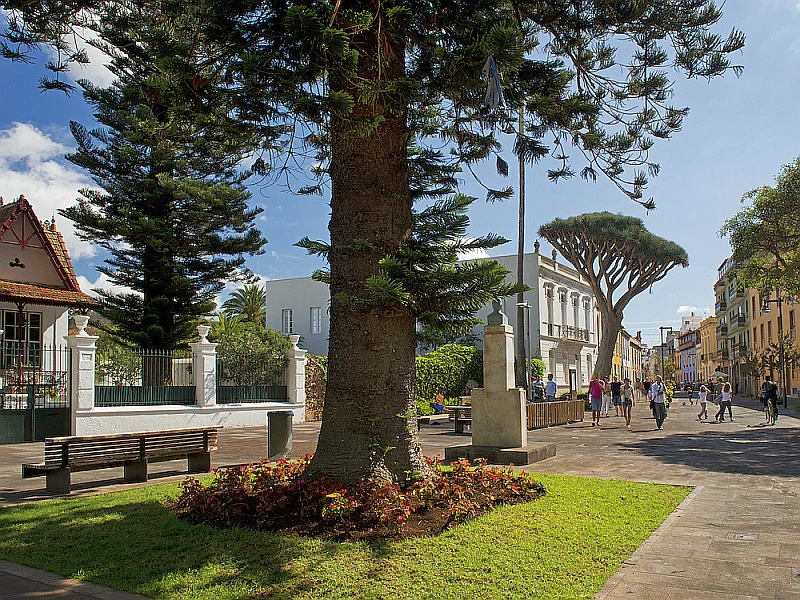
Visitors to La Laguna are invited to immerse themselves in its captivating ambiance, where every cobblestone street and centuries-old building whispers tales of bygone eras. Here, you’ll find yourself transported to a world where the past seamlessly merges with the present, creating a unique atmosphere that is both nostalgic and exhilarating.
One of the city’s most striking features is its meticulously preserved colonial architecture, which exudes a timeless elegance. Wander through its labyrinthine streets, and you’ll encounter splendid examples of colorful, centuries-old mansions, churches, and plazas that reflect the grandeur of a bygone era. Each architectural masterpiece tells a story of La Laguna’s illustrious history, making it a paradise for history enthusiasts and architectural lovers alike.
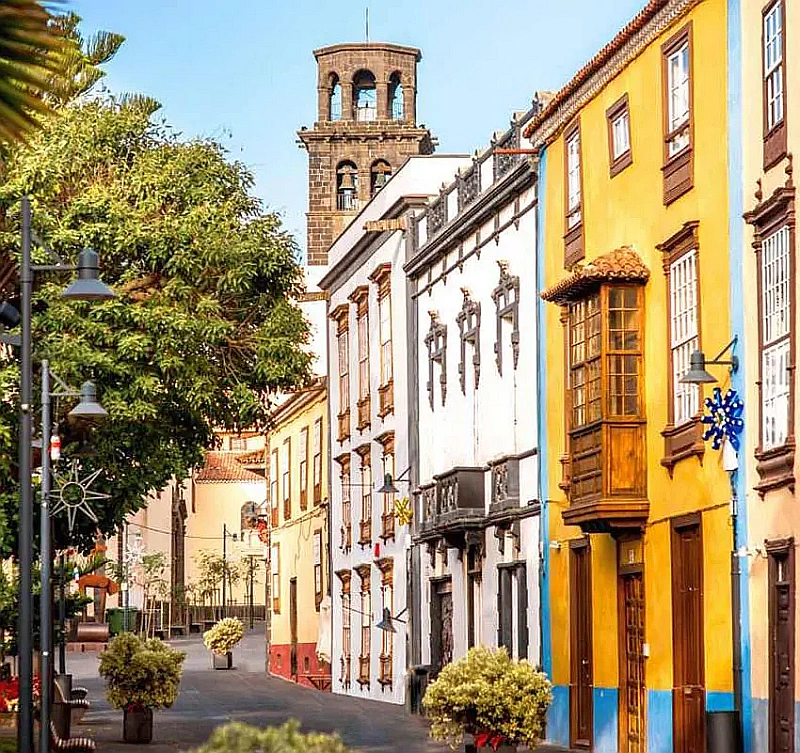
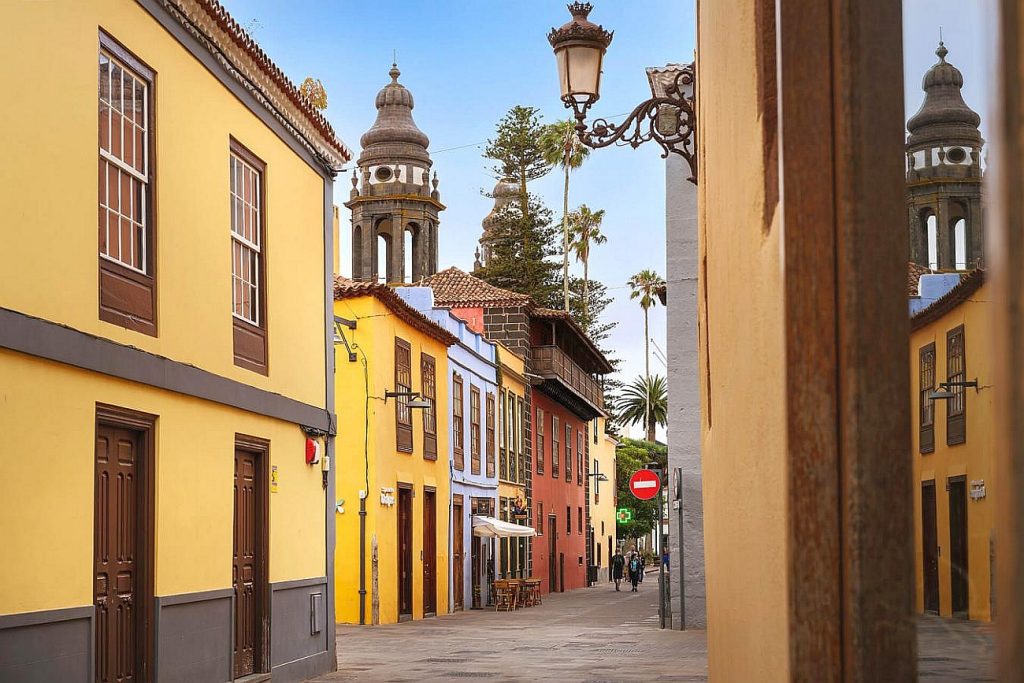
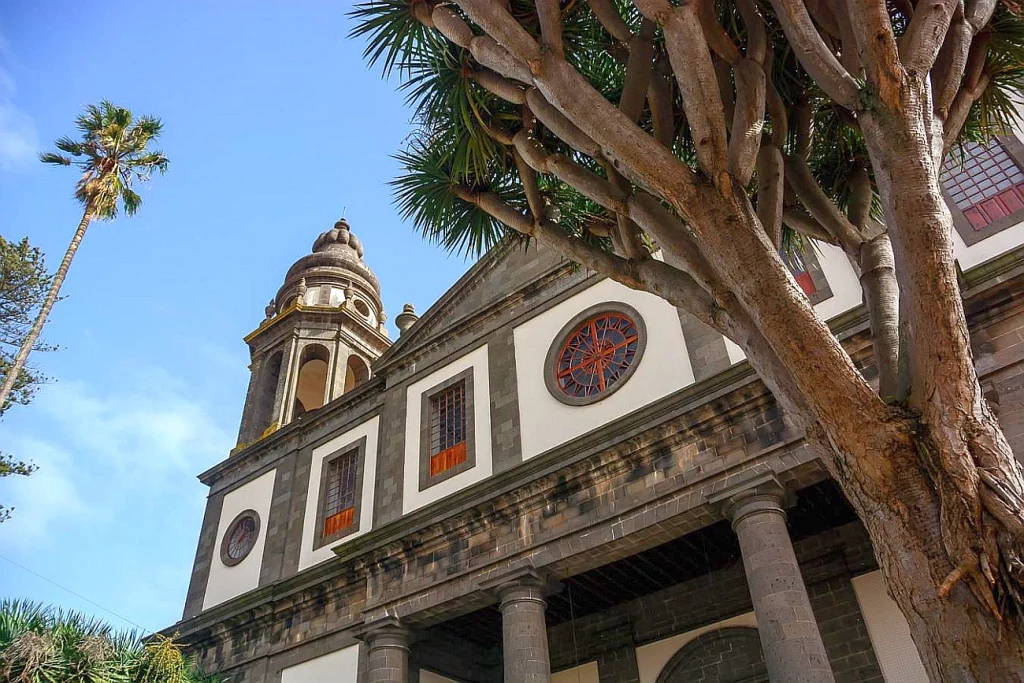
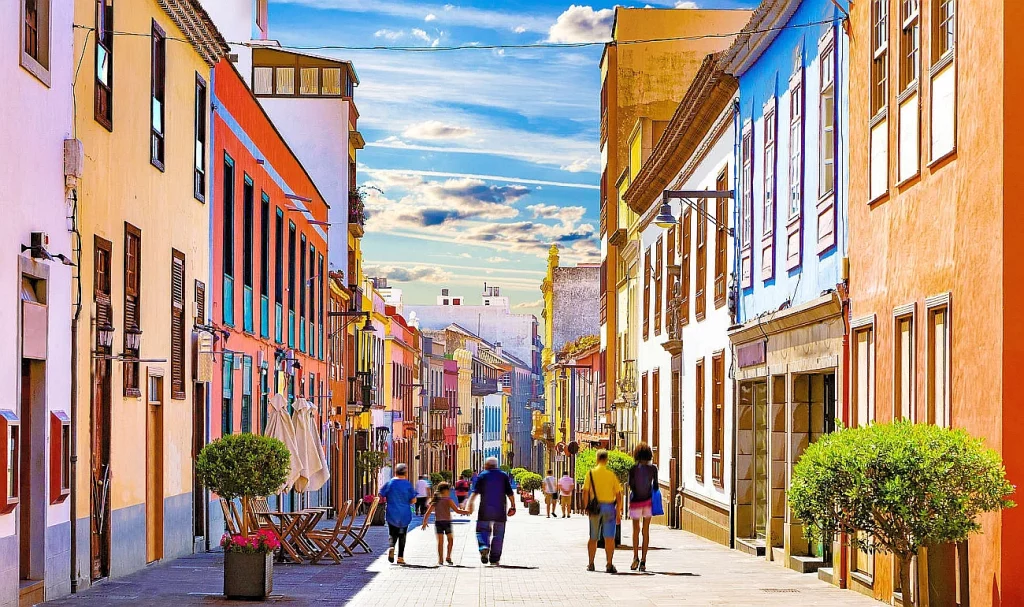
La Laguna is also a vibrant hub of culture, with a thriving arts scene that captures the hearts of all who visit. The city’s numerous galleries, theaters, and cultural centers showcase the talents of local artists, offering a glimpse into the creative soul of Tenerife. Whether you’re admiring a captivating art exhibition, enjoying a live performance, or exploring the city’s lively markets, you’ll be enchanted by the artistic spirit that pervades La Laguna.
As you meander through the charming streets, take a moment to savor the delectable flavors of Canarian cuisine. La Laguna boasts a diverse culinary scene that tantalizes the taste buds with a fusion of traditional and contemporary dishes. From savory tapas to succulent seafood, every meal is a culinary adventure, inviting you to indulge in the gastronomic delights of the Canary Islands.
In addition to its cultural and culinary treasures, La Laguna offers abundant natural beauty just waiting to be discovered. Surrounding the city, lush forests and picturesque landscapes provide the perfect backdrop for outdoor enthusiasts. Hiking trails, nature reserves, and serene parks offer opportunities for exploration and relaxation amidst the island’s stunning natural scenery.
Whether you’re drawn to the city’s historical allure, vibrant cultural scene, or the captivating landscapes surrounding it, San Cristóbal de La Laguna promises an unforgettable journey through the heart of Tenerife. This guide is your key to unlocking the hidden treasures of this UNESCO World Heritage Site, allowing you to experience the timeless charm and richness that make La Laguna a must-visit destination in the Canary Islands.
The Historic Heart of La Laguna
The historical center of La Laguna is a veritable treasure trove of colonial architecture and urban planning, a testament to the city’s rich heritage and influence on the design of colonial cities in the Americas. As you wander its enchanting streets, you’ll be transported back to an era of grandeur and sophistication.
The layout of La Laguna’s historical center is a masterpiece of urban design, serving as a model for countless colonial cities across the Americas. Its wide, open spaces and meticulously planned streets create a sense of grandeur and openness that is both awe-inspiring and inviting. The city’s planners understood the importance of space and symmetry, evident in every corner of the historical center.
One of the most iconic landmarks in this architectural marvel is the Cathedral of La Laguna, a majestic structure that dominates the city’s skyline. Its stunning façade and intricate details reflect the artistry and craftsmanship of the era. Stepping inside the cathedral is like stepping into a time capsule, where the echoes of centuries past resonate through its hallowed halls. The cathedral’s interior is a treasure trove of religious art and historical significance, offering a glimpse into the spiritual and cultural heart of La Laguna.
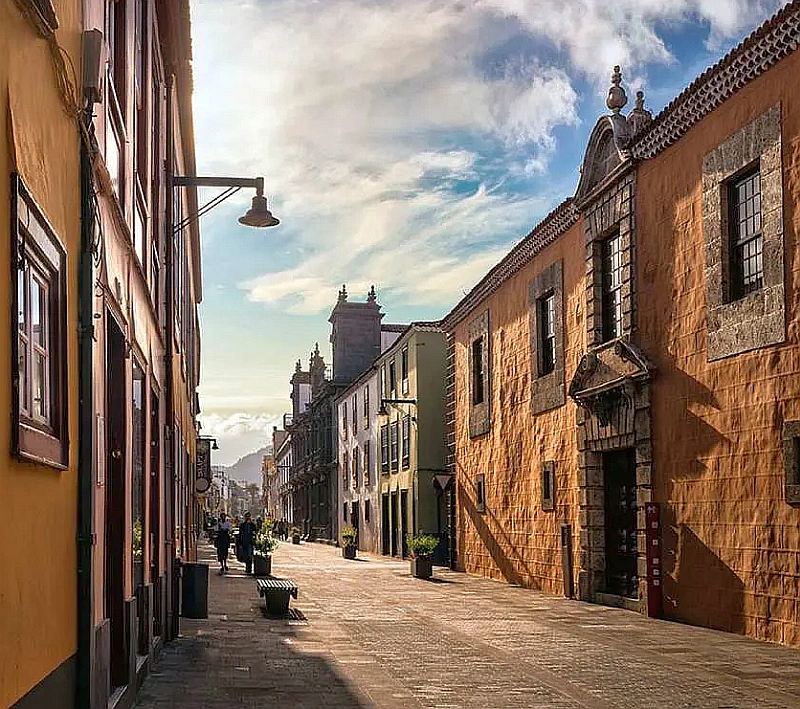
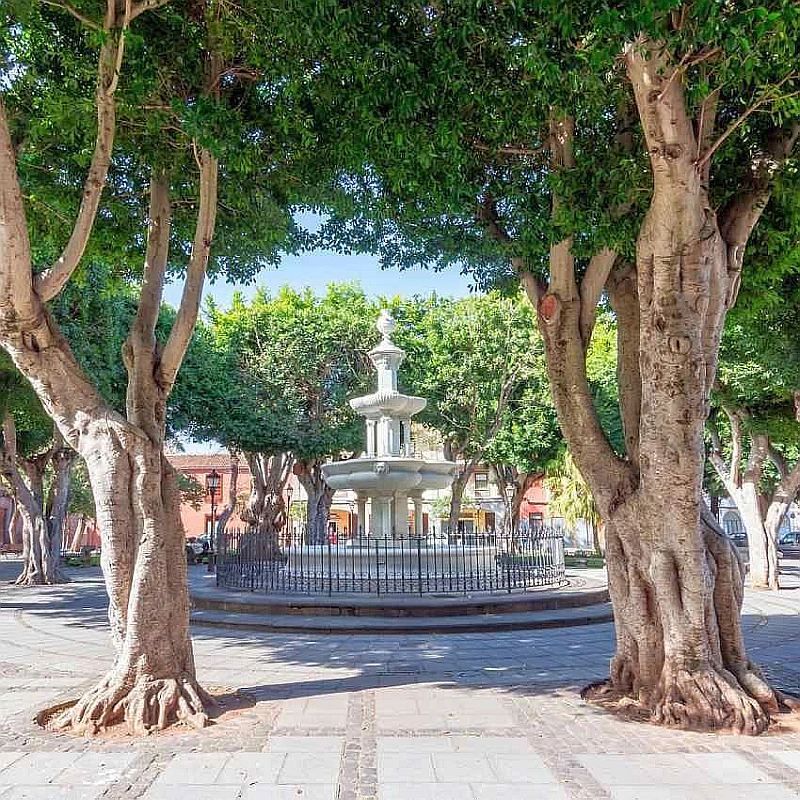
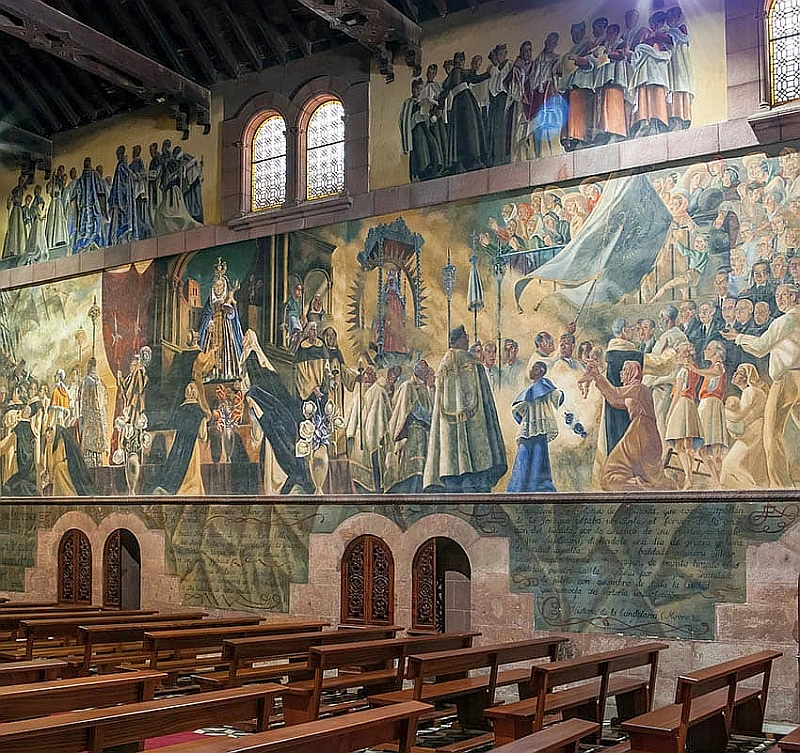
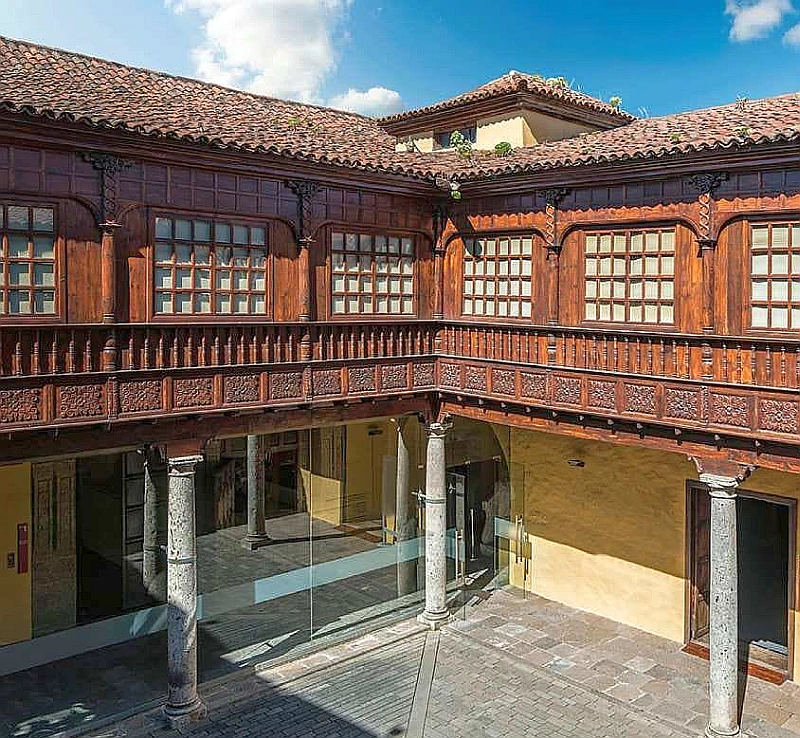
Another gem in the crown of La Laguna’s architectural splendor is the Palacio de Nava. This grand palace, with its imposing façade and elegant courtyard, is a prime example of colonial-era opulence. Once a residence for nobility, it now stands as a testament to the city’s rich history and the enduring legacy of its elite inhabitants. Visitors can explore its stately rooms and marvel at the intricate craftsmanship that adorns its walls and ceilings, providing insight into the lavish lifestyle of bygone eras.
The historical center of La Laguna invites you to stroll along its charming streets, where each turn reveals a new architectural wonder. From colorful facades adorned with intricate balconies to picturesque squares that invite relaxation and reflection, this colonial gem is a visual feast for those who appreciate the artistry of the past.
As you explore the streets, take a moment to appreciate the synergy between the well-preserved colonial architecture and the modern amenities that seamlessly blend with the city’s historical charm. It’s a unique fusion that allows La Laguna to honor its heritage while embracing the demands of contemporary life.
In summary, the historical center of La Laguna is a living testament to the city’s architectural and urban planning prowess. Its wide streets, open spaces, and magnificent landmarks, such as the Cathedral of La Laguna and the Palacio de Nava, make it a captivating destination for history enthusiasts, architecture fans, and anyone seeking to immerse themselves in the colonial legacy of this remarkable city.
A UNESCO World Heritage Site
La Laguna was declared a UNESCO World Heritage Site in 1999, recognized for its unique history and urban layout. The city is celebrated as an example of the first non-fortified colonial town, setting a blueprint for urban development in many cities in the New World.
Cultural Vibrancy and Festivals
La Laguna, a vibrant hub of Canarian culture and tradition, pulsates with life throughout the year, offering a captivating tapestry of festivals and events that showcase the island’s rich heritage. These celebrations are not just gatherings; they are living, breathing expressions of the soul of Tenerife, drawing visitors into a world of customs, music, and dance that have been passed down through generations.
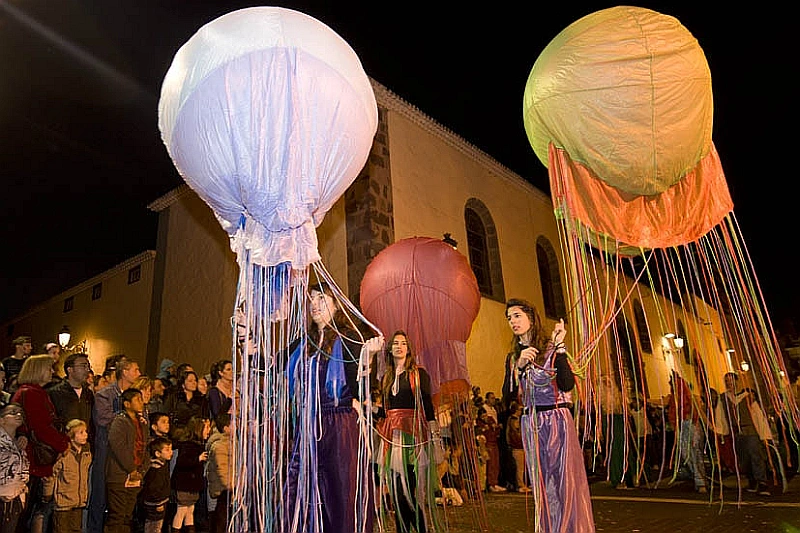
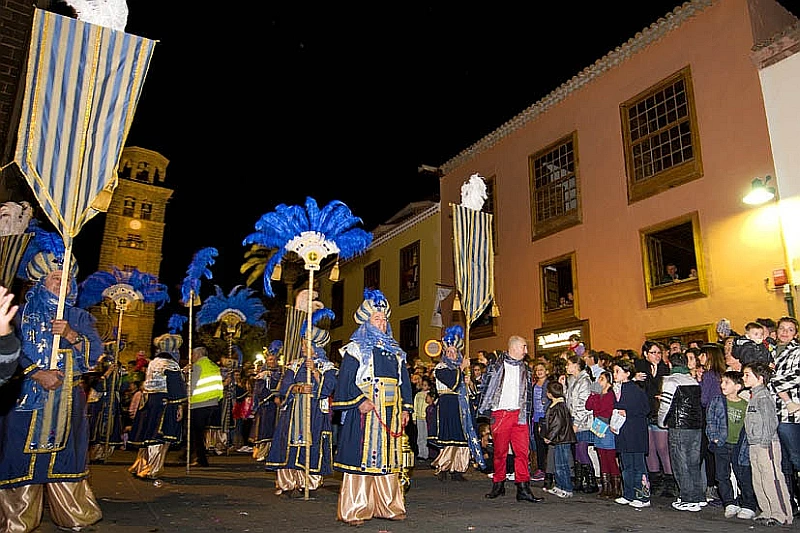
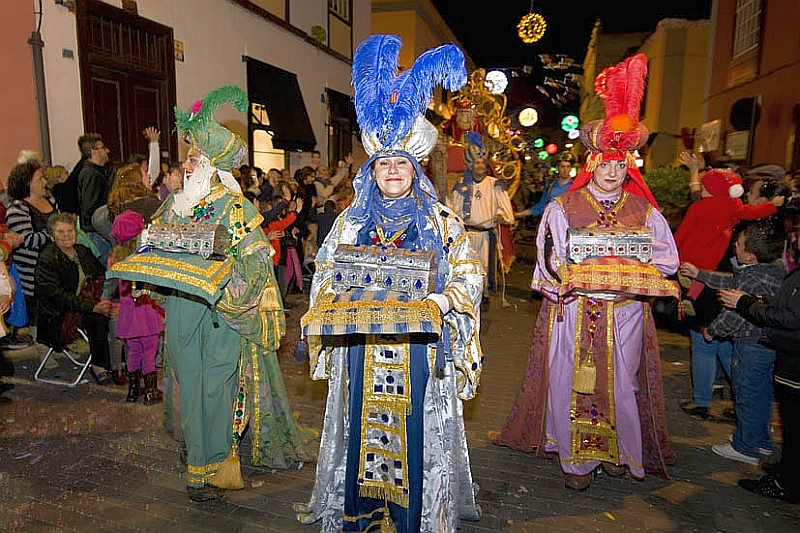
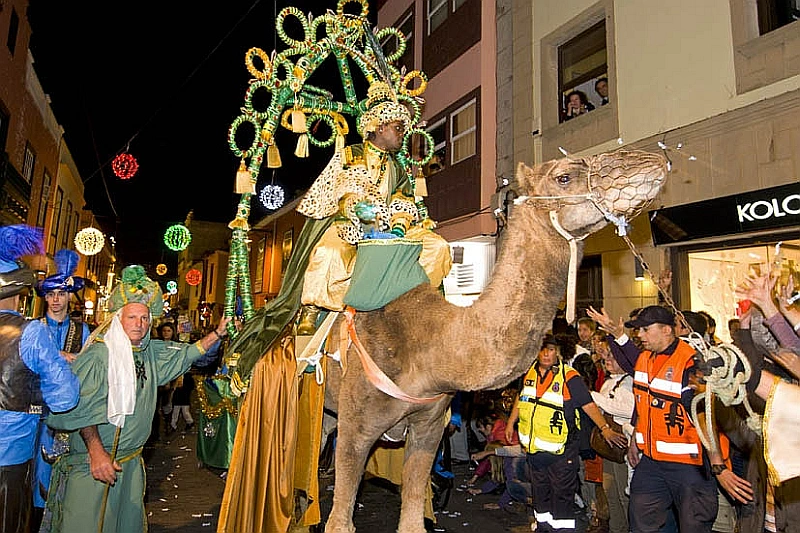
One of the most prominent and deeply cherished festivities in La Laguna is the Semana Santa, or Holy Week, processions. During this solemn yet visually stunning event, the city comes alive with devotion and reverence. Elaborately decorated floats, called “pasos,” depict scenes from the life of Christ and the Virgin Mary, accompanied by penitents in traditional robes. The rhythmic drumbeats and hauntingly beautiful music create solemnity and awe, making Semana Santa an unforgettable experience for those fortunate to witness.
Corpus Christi is another highlight in La Laguna’s calendar of festivities. This religious celebration involves the creation of intricate flower carpets that adorn the city’s streets, turning them into vibrant tapestries of color and fragrance. Residents and visitors gather to admire these temporary works of art, manifesting the local community’s profound devotion and artistic flair.
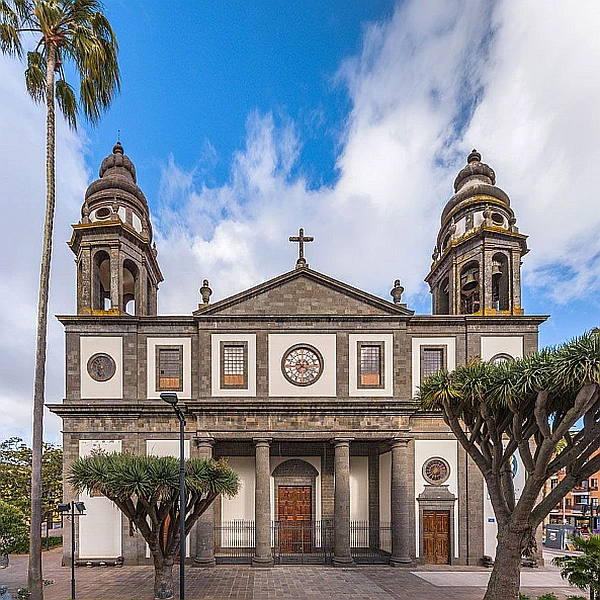
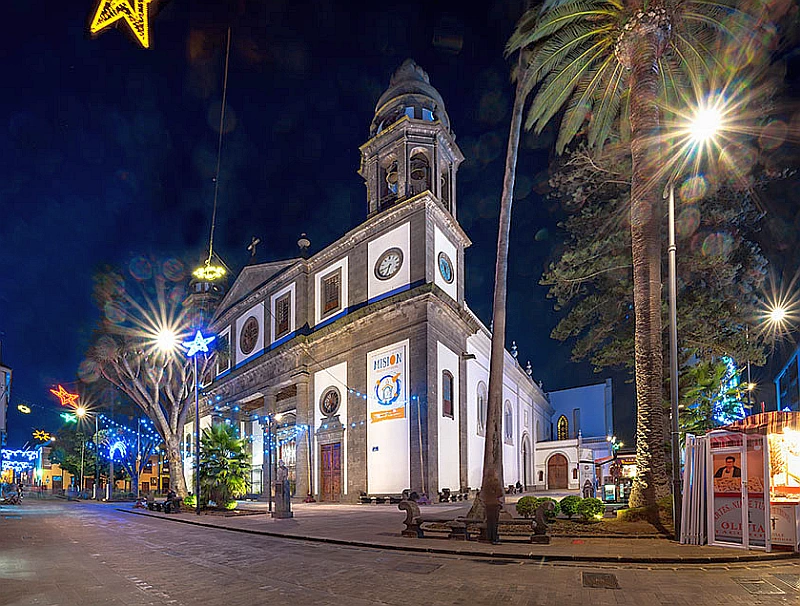
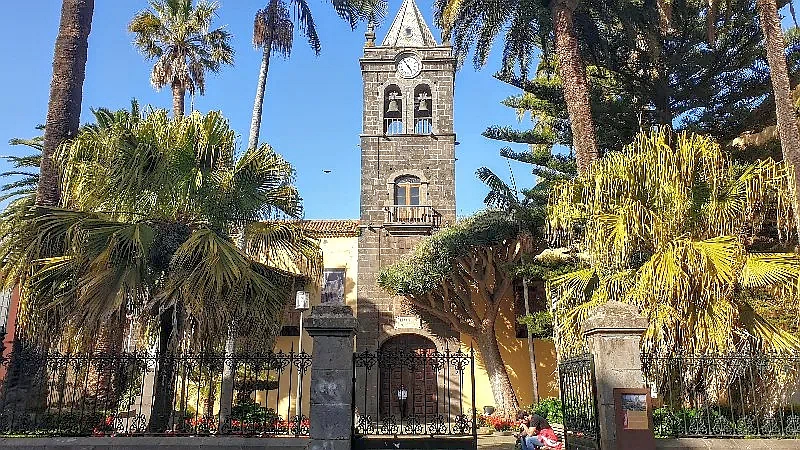
One cannot mention La Laguna’s festivals without paying tribute to the ever-popular San Benito Abad, a joyous event that radiates with the island’s exuberant spirit. This lively celebration features lively music, traditional dances, and vibrant parades that fill the streets with energy and excitement. San Benito Abad offers a unique opportunity to immerse oneself in the rhythms and melodies of Canarian folk music, as well as savor the delightful flavors of local cuisine served during the festivities.
Throughout the year, La Laguna continues to captivate visitors with a rich tapestry of cultural events, from traditional folk festivals to contemporary art exhibitions. The city’s commitment to preserving and sharing its cultural heritage is evident in every event, providing a glimpse into the customs and traditions that have shaped Tenerife’s identity.
As you partake in these celebrations, you’ll find yourself not just as a spectator but as an integral part of the festivities, welcomed with open arms by the warm and hospitable people of La Laguna. These festivals are more than just entertainment; they are an invitation to connect with the heart and soul of the Canary Islands, forging lasting memories and cultural experiences that will remain etched in your heart forever.
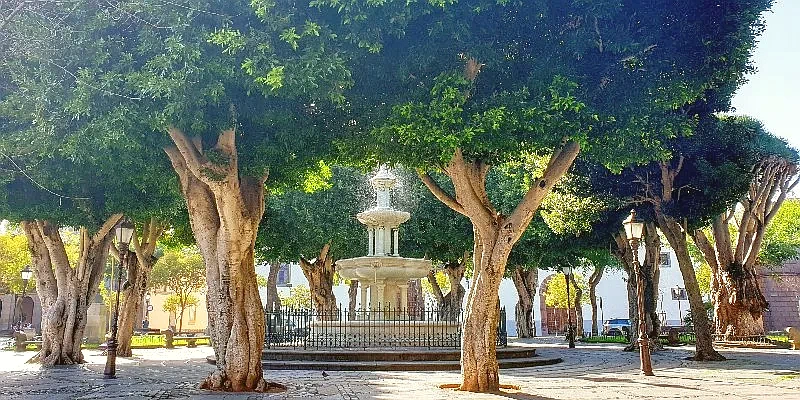
In summary, La Laguna’s festivals and events, including Semana Santa, Corpus Christi, and San Benito Abad, are vibrant Canarian culture and tradition expressions. They offer a window into the soul of Tenerife, providing an immersive experience that combines music, dance, customs, and the warm embrace of the local community.
The University and Its Impact on the City
The University of La Laguna, one of the oldest in Spain, infuses the city with a youthful and dynamic atmosphere. The university contributes to La Laguna’s vibrant cultural scene with various events, exhibitions, and performances throughout the year.
History of San Cristóbal de La Laguna
The history of San Cristobal de La Laguna is a tapestry woven with the threads of ancient Guanche kingdoms, Spanish conquest, epidemics, cultural influence, and architectural splendor. Let’s delve deeper into the fascinating journey of this UNESCO World Heritage city.
Long before the arrival of the Spanish, the land where La Laguna now stands belonged to the Menceyato de Anaga, one of the nine aboriginal Guanche kingdoms on Tenerife. The valley of Aguere, where the city is situated, held a special significance for the Guanches, who considered it a place of pilgrimage. The presence of a large lake in the area added to its allure.
In 1494, the Battle of Aguere occurred within the city, marking a pivotal moment in its history. The city itself was founded between 1496 and 1497 by Alonso Fernández de Lugo, who played a significant role in the conquest of the Canary Islands. La Laguna became the capital of Tenerife after the conquest and later served as the capital of all the Canary Islands. However, in 1582, the city faced a devastating epidemic of plague, claiming the lives of thousands of its residents.
The layout of La Laguna’s streets and urban design closely resembles that of many Spanish colonial cities in the Americas. This layout was indeed the model for numerous Latin American cities, reflecting the city’s historical significance and influence on urban planning.
In 1701, the University of La Laguna was founded, adding an educational dimension to the city’s cultural landscape. However, the 18th century witnessed a decline in population and economic activity, leading to the transfer of the capital to Santa Cruz de Tenerife in 1723. Santa Cruz became the sole capital of Tenerife and, for a time, the sole capital of the entire Canary Islands until 1927, when the capital was shared with Las Palmas de Gran Canaria.
In the 1930s, the Tenerife North Airport at Los Rodeos was opened, marking a significant development in the city’s transportation infrastructure, which continues to expand today.
One of the most distinguished honors bestowed upon La Laguna is the declaration of its historic center as a UNESCO World Heritage Site on December 2, 1999. The city’s commitment to preserving its historical and architectural treasures is evident in its decision to close several streets to automobile traffic, allowing visitors to immerse themselves in its enchanting charm.
La Laguna has earned the nickname the “Florence of the Canary Islands” due to its wealth of churches, convents, old town, and historic buildings. It was a cradle for various artistic and cultural movements, including the Enlightenment, which radiated throughout the Canary archipelago. The Baroque period saw the emergence of notable sculptors, painters, and architects who left their indelible mark on the city and the entire region.
Researchers have recently uncovered a network of tunnels, passages, and underground vaults dating back to the city’s early days. These fascinating discoveries, located beneath iconic buildings, suggest that the present-day city of La Laguna stands higher than its original ground level, effectively burying its historical foundations beneath layers of time.
San Cristobal de La Laguna’s rich history, architectural grandeur, and cultural significance continue to captivate visitors, offering a glimpse into a past that has shaped the city’s enduring legacy.
Exploring the Art and History
La Laguna, a city steeped in history and cultural heritage, boasts a captivating array of museums and art galleries that invite visitors to embark on a journey of exploration and discovery. These institutions are guardians of the city’s rich past, offering insights into the intricate tapestry of Tenerife’s history, art, and anthropology. Among these treasures, the Museum of History and Anthropology of Tenerife, housed within the venerable Casa Lercaro, stands as a beacon of knowledge and enlightenment.
Nestled within the walls of the Casa Lercaro, a historic mansion that is a work of architectural art, this museum is a true gem for those eager to delve into the island’s past. As you step through the museum’s entrance, you are transported back in time, embarking on a mesmerizing journey through the ages.
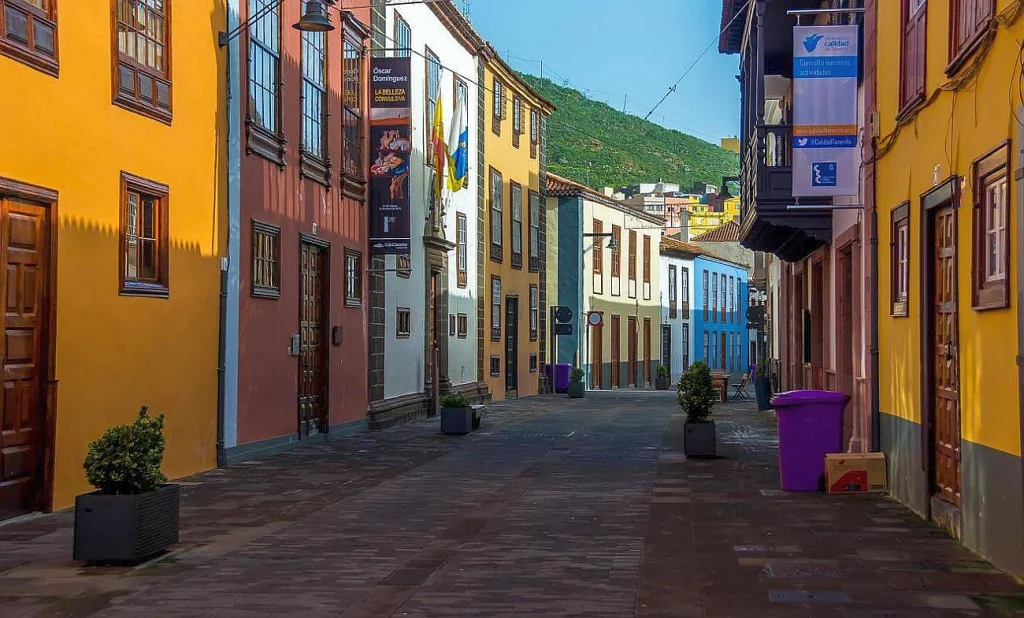
The Museum of History and Anthropology of Tenerife is a veritable treasure trove of artifacts and documents. It exhibits that narrates the story of Tenerife from its earliest days to the present. It offers a comprehensive overview of the island’s history, shedding light on its indigenous Guanche population, colonization’s impact, and Canarian culture’s evolution over the centuries.
One of the museum’s most compelling aspects is its ability to blend the past with the present seamlessly. Visitors can deeply understand Tenerife’s cultural evolution through meticulously curated displays and interactive exhibits, from its indigenous roots to its modern identity as a dynamic part of the Canary Islands. The splendid architecture and historical significance of Casa Lercaro are the perfect backdrop for this captivating journey through time.
As you wander through the museum’s halls, you’ll encounter diverse artifacts, including traditional costumes, archaeological finds, and historical documents illuminating the island’s history and traditions. Additionally, the museum often hosts temporary exhibitions showcasing contemporary art and culture, adding a dynamic and ever-changing dimension to the visitor experience.
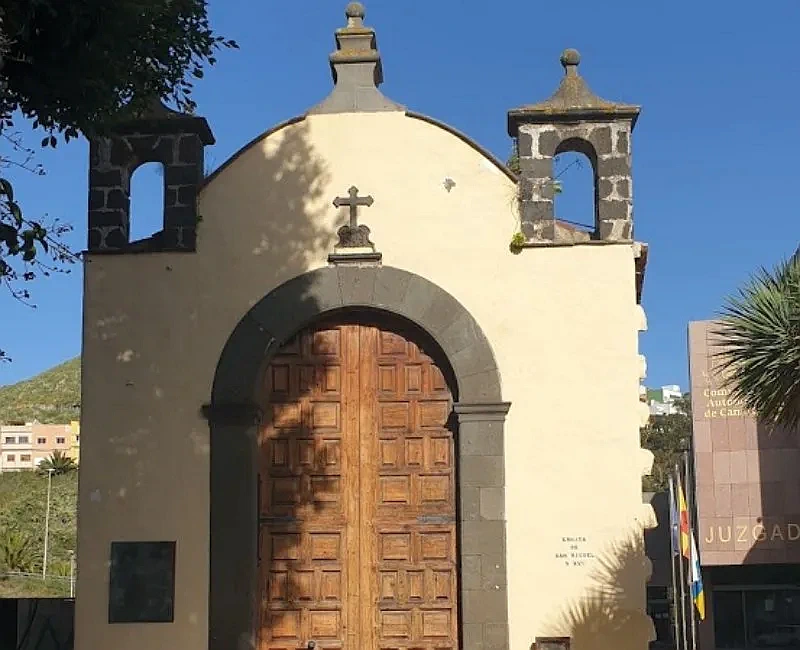
For those with a thirst for knowledge and a passion for history, the Museum of History and Anthropology of Tenerife is a must-visit destination in La Laguna. It is a place where the past comes to life, the stories of generations past are preserved, and the cultural heritage of Tenerife is celebrated and shared with the world.
In conclusion, La Laguna’s Museum of History and Anthropology of Tenerife, nestled within the Casa Lercaro, is a captivating testament to the island’s rich history and cultural evolution. It invites visitors to explore the past and present of Tenerife, offering a deep and meaningful connection to the heritage of this remarkable city and the Canary Islands as a whole.
A Culinary Journey Through La Laguna
The cuisine in La Laguna is a delightful exploration of Canarian flavors. The city’s restaurants and bars offer a range of traditional dishes and innovative culinary creations. From “papas arrugadas” with “mojo” sauce to fresh seafood and local wines, each meal is an opportunity to savor the richness of the island’s gastronomy.
Outdoor Activities in and Around La Laguna
The city’s location offers easy access to a variety of outdoor activities. From hiking in the nearby Anaga Mountains to exploring the lush countryside, La Laguna provides a perfect base for experiencing Tenerife’s diverse natural landscapes.
Other places to see in San Cristobal de La Laguna
San Cristobal de La Laguna, a city brimming with historical and architectural wonders, offers many captivating places to explore. Beyond the well-known attractions, here are some additional must-see places that will further enrich your visit to this UNESCO World Heritage Site:
- Santo Domingo de Guzman Church and Ex-Convent: This magnificent church and former convent are renowned for their stunning architecture and historical significance. The ornate facade and interior detailing provide a glimpse into the religious and artistic heritage of the city.
- Santa Catalina de Siena Convent: Immerse yourself in the serene ambiance of this convent, which boasts a tranquil courtyard and exquisite architectural details. It’s a place to contemplate and appreciate the city’s religious heritage.
- De la Cruz Verde Chapel: A charming and quaint chapel, De la Cruz Verde offers a peaceful retreat from the city’s bustling streets. Its simplicity and historical charm make it a hidden gem.
- Casa Riquel: Step back in time as you explore the historic Casa Riquel, a beautifully preserved mansion that reflects the opulence and lifestyle of bygone eras. The intricate architecture and elegant decor are a testament to the city’s grand past.
- Casa Peraza de Ayala and the Chapel of The Holy Trinity: Discover the fascinating history of this noble residence, which also houses the Chapel of The Holy Trinity. The combination of residential and religious elements makes it a unique cultural site.
- Casa Mustelier: Admire the architectural beauty of Casa Mustelier, another fine example of the city’s colonial-era architecture. The building’s facade is a work of art in itself.
- Casa Bigot: Casa Bigot’s impressive facade and historical significance make it a noteworthy stop for architecture enthusiasts and history buffs.
- Casa Franco de Castilla: Delve into the history and heritage of this historical mansion, which showcases the architectural and cultural elements that define La Laguna.
- Leal Theater: Enjoy a cultural experience at the Leal Theater, where you can attend performances, concerts, and exhibitions. The theater’s elegant design and cultural offerings make it a city’s cultural hub.
- Church of Nuestra Señora de la Concepcion: Visit this charming church, which combines religious devotion with architectural beauty. Its picturesque setting in the heart of La Laguna adds to its allure.
- San Agustin Church and Ex-Convent: Explore the rich history of San Agustin Church and its accompanying former convent. The church’s ornate altar and serene atmosphere are particularly noteworthy.
- San Francisco Convent: A visit to this historic convent provides insight into the daily life of the Franciscan friars who once resided there. The architecture and courtyards are a testament to their dedication.
- Juzgado de Indias: Discover the historical significance of the Juzgado de Indias, a building with a colonial-era facade that reflects the city’s past as a center of commerce and administration.
- Casa Uque Botino: This historic mansion showcases the architectural elegance of La Laguna and offers a glimpse into the lives of its former residents.
- Church and Hospital of Nuestra Señora de Los Remedios: Explore the fascinating combination of a church and hospital, which played a crucial role in the city’s history.
- Salazar Palace (Episcopal Palace): Admire the grandeur of the Salazar Palace, also known as the Episcopal Palace, which features impressive architecture and historical significance.
- House of The Jesuits: Uncover the history and architecture of the House of The Jesuits, a site that reflects the influence of the Jesuit order in La Laguna.
- Casa Montanes: Casa Montanes is an architectural gem that offers a glimpse into the city’s colonial past through its beautifully preserved features.
- Casa Linares: Visit Casa Linares to appreciate the architectural finesse of another historic mansion, complete with intricate details and a rich history.
- Palacete Rodríguez de Azero: The Palacete Rodríguez de Azero is a charming mansion that showcases the elegance of La Laguna’s architecture and heritage.
- Sanjuan Bautista Convent: Conclude your exploration with a visit to the Sanjuan Bautista Convent, a serene and culturally significant site that encapsulates the city’s religious and historical heritage.
These additional places in San Cristobal de La Laguna offer a deeper immersion into the city’s cultural and historical tapestry, making your visit a truly enriching experience.
Subdivisions of San Cristóbal de La Laguna
With its diverse and vibrant neighborhoods, La Laguna offers a captivating tapestry of life and culture that enriches the city’s character. Each subdivision has its own unique charm and distinct identity, contributing to the overall allure of this remarkable city. Here, we’ll take a closer look at these neighborhoods, inviting you to explore the multifaceted beauty of La Laguna.
- La Verdellada: Nestled amidst lush greenery, La Verdellada is a tranquil oasis where residents and visitors alike can escape the hustle and bustle of city life. The verdant surroundings and peaceful ambiance make it a perfect place for strolls and relaxation.
- Viña Nava: Known for its vineyards and rural charm, Viña Nava invites you to savor the flavors of local wines and immerse yourself in the region’s agricultural traditions. The picturesque countryside offers breathtaking views and a sense of serenity.
- El Coromoto: El Coromoto is a neighborhood with a sense of community and warmth. Here, you can experience the local residents’ authentic hospitality and discover Canarian culture’s hidden gems.
- San Benito: This vibrant neighborhood comes alive during the festivities of San Benito Abad, showcasing the lively spirit of La Laguna. Its colorful streets and lively atmosphere make it a hub for celebrations and cultural events.
- El Bronco: Nestled in the city’s heart, El Bronco offers a blend of historic charm and modern convenience. Its central location makes it a convenient starting point for exploring La Laguna’s cultural treasures.
- La Cuesta: As one of the city’s oldest neighborhoods, La Cuesta is a place where history meets contemporary life. Its narrow streets and charming architecture provide a glimpse into the city’s past, while its modern amenities cater to the needs of its residents.
- Taco: Taco is a dynamic neighborhood known for its bustling markets and vibrant street life. It’s the perfect place to savor authentic Canarian cuisine and experience the lively atmosphere of local markets.
- Tejina: Tejina is a coastal gem that boasts beautiful beaches and a relaxed seaside vibe. It’s a popular destination for those seeking sun, sand, and sea, offering a refreshing escape from the city’s hustle and bustle.
- Valleguerra: Valleguerra is a picturesque enclave that captivates visitors with its natural beauty and scenic landscapes. It’s an ideal spot for outdoor enthusiasts and nature lovers, offering hiking trails and panoramic vistas.
- Bajamar: This coastal neighborhood is a haven for surfers and beach enthusiasts. Bajamar’s rugged coastline, natural rock pools, and oceanfront promenade provide a stunning backdrop for outdoor activities and relaxation.
- Punta del Hidalgo: Punta del Hidalgo is a coastal village known for its rugged cliffs and stunning coastal scenery. It’s a peaceful retreat where you can enjoy the soothing sound of crashing waves and breathtaking sunsets.
- Geneto: Geneto is a residential neighborhood that offers a quiet and comfortable living environment. Its proximity to the city center and modern amenities make it a convenient choice for residents.
- Los Baldios: Surrounded by picturesque landscapes and natural beauty, Los Baldios is a serene retreat for those seeking tranquility and a connection with nature.
- Guamasa: Guamasa is a bustling neighborhood with a strong sense of community. Its lively streets and local markets reflect the vibrant spirit of La Laguna.
- El Ortigal: El Ortigal is a charming neighborhood with quaint streets and traditional architecture. It’s a place where time seems to stand still, allowing residents and visitors to savor the simplicity of life.
- Las Mercedes: This historic neighborhood has charming colonial-era buildings and delightful squares. It’s a place where history comes alive and where you can immerse yourself in the city’s cultural heritage.
- El Batan: El Batan is a dynamic urban neighborhood with a mix of residential and commercial areas. Its bustling streets offer a taste of city life, with shops, cafes, and cultural attractions.
- Las Carboneras: Las Carboneras is a neighborhood where the past and present coexist harmoniously. Its traditional charm and historical significance make it a fascinating place to explore.
- San Diego: San Diego is a neighborhood that encapsulates the essence of La Laguna’s cultural diversity. It’s a melting pot of traditions and influences where residents from various backgrounds come together to create a vibrant community.
- Las Gavias: Las Gavias is a coastal neighborhood known for its pristine beaches and natural beauty. It offers a serene escape where you can unwind by the sea and enjoy the tranquility of the coastline.
In conclusion, La Laguna’s subdivisions form a mosaic of experiences, each offering a unique perspective on the city’s history, culture, and natural beauty. Whether you seek the vibrant energy of festivals, the tranquility of nature, or the charm of historical streets, La Laguna’s neighborhoods invite you to explore and discover the multifaceted allure of this captivating city.
Maps of San Cristóbal de La Laguna
In conclusion, San Cristóbal de La Laguna, Tenerife, is a city that captivates with its historical significance, cultural vibrancy, educational importance, delicious cuisine, and access to natural beauty. Its blend of heritage, tradition, and dynamic atmosphere makes it an essential destination for anyone visiting the Canary Islands. Whether you’re a history enthusiast, a cultural explorer, a food lover, or an outdoor adventurer, La Laguna offers a rich and fulfilling experience. Discover the timeless charm of San Cristóbal de La Laguna, where history and culture come alive in the heart of Tenerife.
